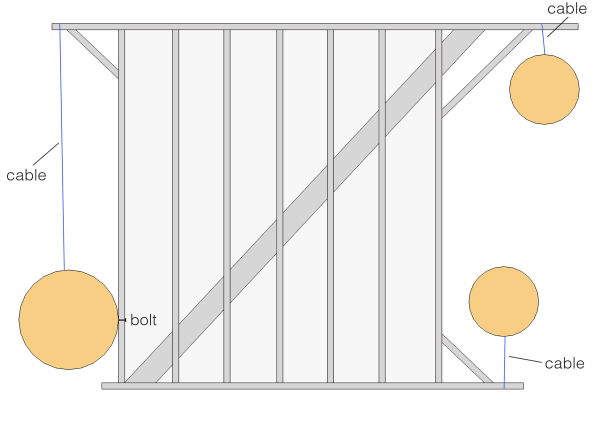Single tree | Two trees | Three trees | Four trees
Three tree support examples
There are two main types of three tree configuration—clusters and widely spread trees. A cluster of trunks can initially seem like a great place to put a treehouse, and it would be if it wasn't for tree movement. A close group of trees is an awkward place to set up a flexible support network. Sometimes the best thing to do is leave a tree out of the support system altogether. This tree can still be allowed to come up through the platform, but you will find things easier when you only have two trees to contend with.
Wider spaced groups of three trees can be challenging to build in, but the reward is greater floor area if you can gain solid support from another point on your platform. Some flexibility of the supports is essential, so try to use the largest tree as a 'fixed' support point and use flexible joints at the other tree.
Every set of three trees is different, so there are many possible configurations of supports and the final shape of the floor. The trees are normally in charge when it comes to how your floor will look, but unusual floor spaces can lead to much more interesting architecture so let your treehouse design be flexible in this area.

In the example above, part of the floor extends slightly further to the right than the rest. A brace under the floor helps to hold the platform's shape even when being moved by forces from several different directions. One corner of the platform is bolted to the largest tree as a fixed support point. This tree also provides support for another corner using a cable, but the support could also come from a knee brace underneath, as the platform is fixed relative to this tree.
Single tree | Two trees | Three trees | Four trees
